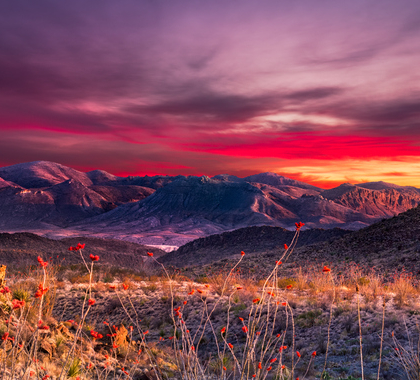To help address a multibillion-dollar maintenance backlog, the National Park Service (NPS) proposes increasing the fees charged to visit some of the nation’s most popular parks.
During the five months of each park’s peak season, fees would increase from their current rates of around $25 or $30, to $70 for automobiles, $50 for motorcycles, and $30 per person on bike or foot. Fees for commercial tour buses would also rise.
After NPS responds to public comments, Secretary of the Interior Ryan Zinke will decide whether to approve implementing the higher fees at 17 parks. Starting May 1, 2018, fees would increase at Arches, Bryce Canyon, Canyonlands, Denali, Glacier, Grand Canyon, Grand Teton, Olympic, Sequoia & Kings Canyon, Yellowstone, Yosemite, and Zion National Parks. Beginning June 1, 2018, fees would increase at Acadia, Mount Rainier, Rocky Mountain, and Shenandoah National Parks, and as soon as practicable this year at Joshua Tree National Park.
Billions in Deferred Maintenance
In an October 24, 2017 news release announcing the proposal, NPS said the fee increases could raise national park revenue by $70 million per year. The fees brought in $200 million in Fiscal Year 2016.
In addition to revenues generated by visitors, national parks receive appropriations from Congress. NPS says those appropriations are usually only half of the requested amount, which they say is why repair and replacement of aging facilities and infrastructure in the National Park System has been lagging for many decades.
Deferred maintenance totaled $11.3 billion as of September 30, 2016, including $2.2 billion for “Highest Priority Non-Transportation Facilities,” according to the NPS’s latest report, from 2017.
Discounts, Deals
Writer Sarah Gibbens says people she interviewed for an October 25, 2017 National Geographic article expressed concern the higher fees will reduce access to the parks for lower-income people and minority groups. … In another October 25, 2017 article, the editorial board of the Denver Post denounced the proposal, arguing the proposed fee hikes would limit low-income families’ access to national parks.
The Park Service says many people will be able to visit the parks for the same price as before, at greatly reduced prices, or for free.
Only 118 of the 417 park sites charge any entrance fee, and a park-specific annual pass for any of the 17 parks would be available for $75. For $5 more, visitors can receive access to all parks and other federal lands.
“The cost of the annual America the Beautiful–The National Parks and Federal Recreational Lands Pass, which provides entrance to all federal lands, including parks for a one-year period, would remain $80,” the Park Service stated in its October 24 news release. “Entrance fees are not charged to visitors under 16 years of age or holders of Senior, Military, Access, Volunteer, or Every Kid in a Park (EKIP) passes. The majority of national parks will remain free to enter.”
Interest Group Politics
Economist John Baden, founder and chairman of the Foundation for Research on Economics and the Environment, has written about problems in the national park system for more than 30 years. Baden says the fees at the few parks that charge visitors to enter are extraordinarily low.
“In 1915, a weeklong pass to Yellowstone cost $10, equaling over $300 in today’s inflated dollars,” said Baden.
Seniors, who are the highest-income age group, get especially deep discounts, says Baden, attributing this fact to a feeling of entitlement and the political influence seniors have as a voting bloc.
“For decades, a lifetime Golden Age Passport, providing unlimited access to all of America’s 400 units of the National Park System for seniors, cost just $10,” Baden said. “It has recently gone up to $80.”
“Why does America’s wealthiest cohort, those over 62 years of age, enjoy such a privilege?” asks Baden. “Because, one, they are wealthy, and wealth and political influence are covariant; two, National Park visitors have a high propensity to vote; three, to voters, grandparents are sympathetic creatures; and, four, seniors feel entitled and have a great amount of discretionary time to invest.”
‘A Bloated Bureaucracy’
The Trump administration has proposed increasing federal funding to solve the deferred maintenance issue, but more tax money won’t solve the underlying problem with the parks system, says Randal O’Toole, a senior fellow at the Cato Institute.
“The National Park Service is a bloated bureaucracy that spends roughly twice as much on construction and maintenance, per square foot, as the private sector,” O’Toole said. “One reason for this is the service siphons off a large portion of the construction funds given to it by Congress to administrative overhead.”
“As part of its infrastructure package, the Trump administration proposes to dedicate some federal energy and mineral revenues to national park infrastructure,” said O’Toole. “This will merely increase Park Service bloat, since the parks won’t have any incentive to keep costs affordable.”
O’Toole says the federal government should withdraw its financial support altogether.
“Ultimately, I think national parks should be funded exclusively out of user fees or donations from private charities or other park supporters,” O’Toole said.
Joe Barnett ([email protected]) writes from Dallas, Texas.
INTERNET INFO
Holly Fretwell et al., “Breaking the Backlog: 7 Ideas to Address the National Park Deferred Maintenance Problem,” Property and Environment Research Center, February 2016: https://heartland.org/publications-resources/publications/breaking-the-backlog-7-ideas-to-address-the-national-park-deferred-maintenance-problem





